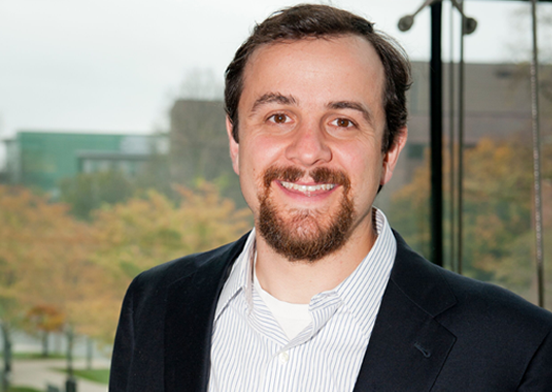
Justin Reich is the Executive Director of the MIT Teaching Systems Lab, an Assistant Professor in the Comparative Media Studies/Writing department, and a Faculty Associate of the Berkman-Klein Center for Internet and Society. As a learning scientist, he investigates the complex, technology-rich classrooms of the future and the systems we need to prepare educators to thrive in those environments.
When and how did you become interested in teaching methods?
I’ve taught my whole life. I was a camp counselor in high school, I taught high school history and wilderness medicine out of college, and I taught in the teacher education program at Harvard during my doctorate. Teaching is infinitely rich and complex. With my students, we’ll ask a question like “should high school math students be able to study using Khan Academy instead of taking a class?” and in our discussions, we’ll end up touching on cognitive science, assessment design, teacher training, rural library access, national broadband policy, social psychology, and a dozen other topics. If you pull on any thread in our complex education ecologies, you’ll find that that thread woven in with all different parts of our society.
How can teachers better practice teaching methods within their classroom without disrupting the educational process?
Most professions have a space for practice or apprenticeship where responsibilities are gradually increased. For example, a doctor does his residency for three years after medical school. All too often, a teacher in their first year will have the same full set of responsibilities as teachers in their 20th year. One of our research goals in the Teaching Systems Lab is to develop technology-mediated practice spaces that allow teachers to rehearse teaching approaches in a low stakes setting. We are developing games and simulations that immerse novice teachers in the challenges of the classroom, where they can try new things and make mistakes.
Beyond our practice spaces, it certainly requires some disruption to try new things in the classroom. We need to design educational systems that make room for teachers to be constantly testing and refining their approaches.
What is the biggest change needed in the classrooms?
If you look at the teaching going on in the best schools in this country, you’ll find that there are different models that all lead to great teaching. There are no excuses schools, project-based learning schools, competency-based schools, and other models that when executed well can lead to great teaching and learning. We often say that it’s not about identifying the one right approach to classroom instruction, but getting one approach right.
What these very different schools do have in common is that their teachers are constantly learning. They are constantly evaluating their teaching approaches, looking for areas of improvement, and testing new ideas with colleagues. For classroom practice to improve in lots of different schools, teachers need more time to collaboratively plan, to learn, to test new ideas, and to share what they are learning with their colleagues.
Where do you see the classroom in ten years?
Overwhelmingly, it will look very similar to what it is now. Education has been very conservative, and for many good reasons. At the same time, in school systems all across the world, there is a recognition that the recitation-based teaching methods that are broadly used won’t prepare students fully for the complex challenges of the future. If you ask students about their most powerful learning experiences, often students will talk about their learning on the periphery of the curriculum: what they learned on a debate team, or a robotics club, or in a musical ensemble. These are learning experiences where students had some choice of what interests to pursue, and they developed and practiced skills in the service of authentic performances of their understanding. I’d love to see the teaching and learning experiences in the core of the curriculum look more like what we see in the periphery.
What types of research are ongoing in the Teaching Systems Lab?
We talk about three lines of research in our lab: online and blended learning for educators, teacher practice spaces, and seeing the future first. For online and blended learning, we believe that expanding opportunities for teacher learning is going to require using more online approaches. For instance, we have two new MOOCs on innovation and change leadership in schools, and we’re interested in testing these both as open online courses, and as learning materials for smaller groups within schools or districts. In our teacher practice space work, we’re interested in developing games and simulations that let teachers rehearse for and reflect on important decisions in teaching. For “seeing the future first,” we’re interested in ideas that from the vantage point of MIT seem central to the future of work and research, but may not be visible yet to the broader public. For instance, we developed a course called Design Thinking for Leading and Learning, but we see the engineering design process as central to how innovation happens across MIT from the Sloan School to the Mechanical Engineering department, but the process is still a mystery to many educators. We’re interested in how we could get students all over the world.
What is your favorite thing about teaching and working at MIT?
It’s an incredibly inspiring place to be, surrounded by people with respect for risk taking and interdisciplinary work. Many of the faculty believe really strongly that science and math are not the providence of the elite but rather fundamental to being a human being. The efforts we have with MITili, the pK-12 Action Group and J-WEL are helping stage the question of what the world would look like if every student could go to MIT. That’s the goal we’re committed to and that’s what makes MIT special.